Blockchain Scalability - A Holistic Recap
Original Slide Contents:
Blockchain Scalability
A Holistic Recap
Prelude
- Hello 👋🏻
@kianenigma / kianenigma.nl - Polkadot for ~6 years
- Re-discover the fundamentals of blockchains
- I am here to solve industry-scale problems, not sell a product
Note:
- I am a core engineer of Polkadot.
- On a journey to re-discover the fundamentals of blockchains. This talk is part of my journey.
- Purpose-dysphoria
- Academic talk, not selling anything. Not talking much about Polkadot (very little)
Owning Digital Money
- €1000 in Revolut (🔫👮🧑⚖️⛪️ -> Conditional Trust)
- €1000 in the Bitcoin network (🧮 ♾️ -> Synthesizes Verifiable Trust)
- Economically secured validators (💻💰) doing redundant work
Note:
Why do we trust each?
- In Revolut, there is, in principle, as little as one computer, owned by Revolut, processes a transaction, and we trust the outcome of that, because of all the legal regulations around banking, government, law enforcements etc.
- In the bitcoin network, we synthesize a new type of trust, that is not based on social-norms, central-power, and law-enforcement, and is instead more based on branches of science, and is therefore verifiable, namely: mathematics, game theory and economics.
We don't trust a hash function to be one-way because a certain nation has a strong military, it is one way no matter who you are, and where you live.
- A big part of this "based on branches science" is the fact that in a network like Bitcoin:
- a large number of actors can be the authority, each taking turn in become the leader
- and many others, can check what that leader has done
- We call this collective of the above two groups of entities "Validators"
- All validators have skin in the game -> Economic Security
- All other nodes can observe and re-verify the behavior of validators
Secure Validator Set Working Together
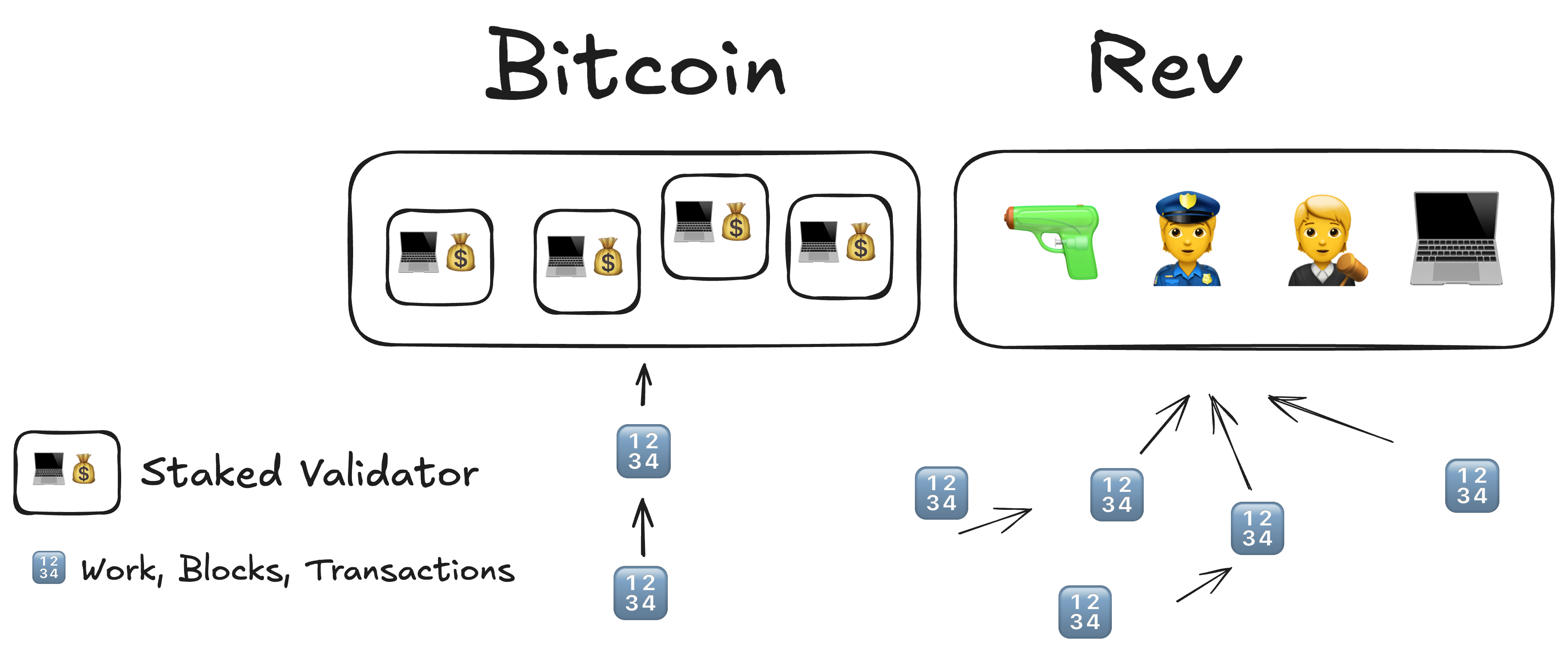
Is one massive, SLOW, TRUSTWORTHY computer.
Note:
- And a key reason why blockchains have a hard time scaling: All validator's at the simplest model, have to re-execute everyone else's work, and come to consensus/finality about it.
Question: Which Computer model is good, or perhaps good for which use cases? idk, deeper philosophical question.
Question statement: How can I make the Web3 Computer go faster? and while doing so, am I am compromising on the trust-worthy-ness of it?
This is the core issue we try to tackle, how can we remove this property of "everyone re-executes everything".
Scaling Options
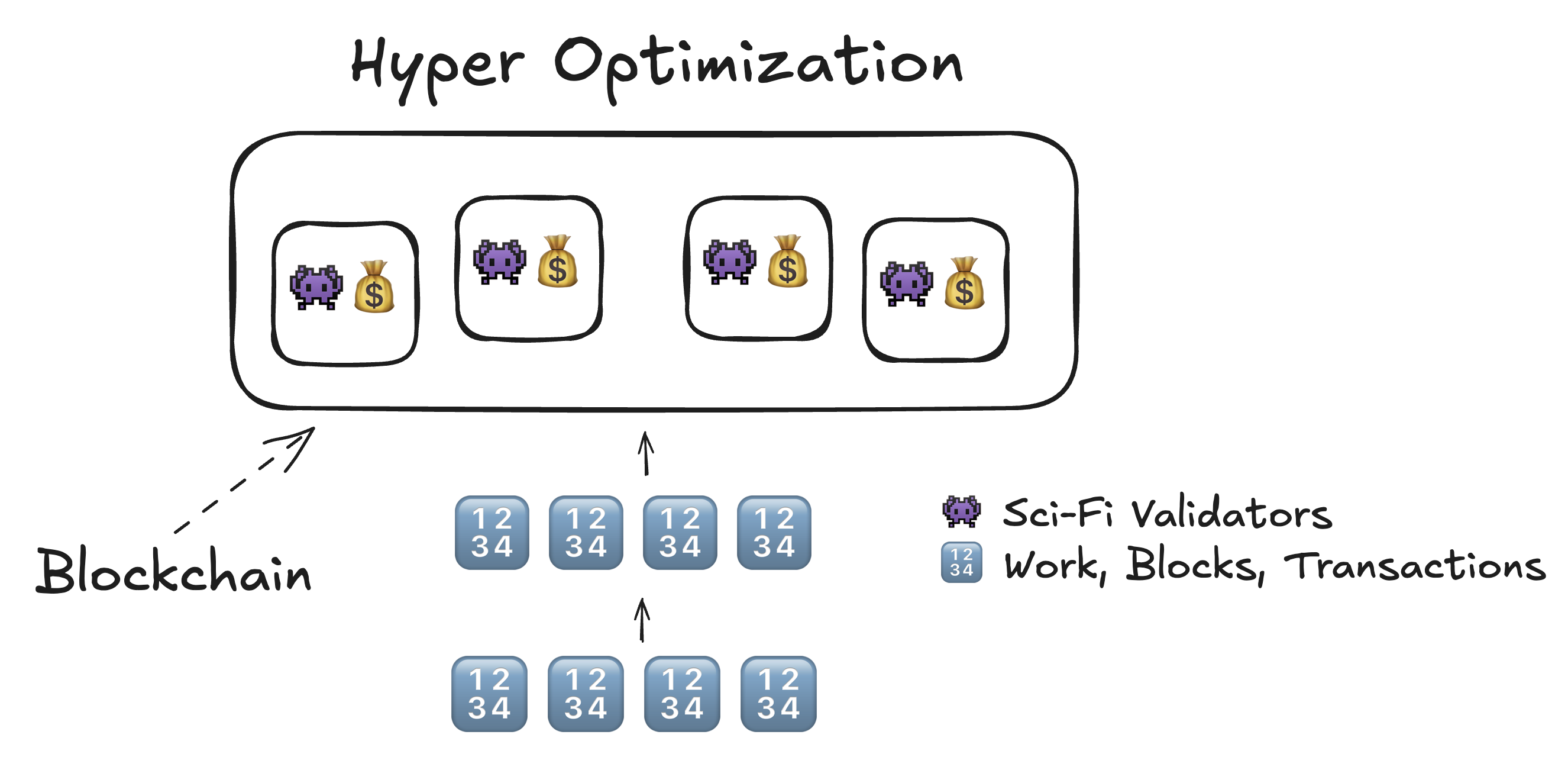
+No fragmentation-Vertical scaling / Cutting corners?
Note:
- Somewhat like brute forcing it.
- Needs careful consideration of how much of trust-worthiness of the original model it retains.
- Not having merklized state -> no light clients ever
- Hardware requirements to run the network beyond what an individual can ever afford.
- Solana - How it Works (Helius)
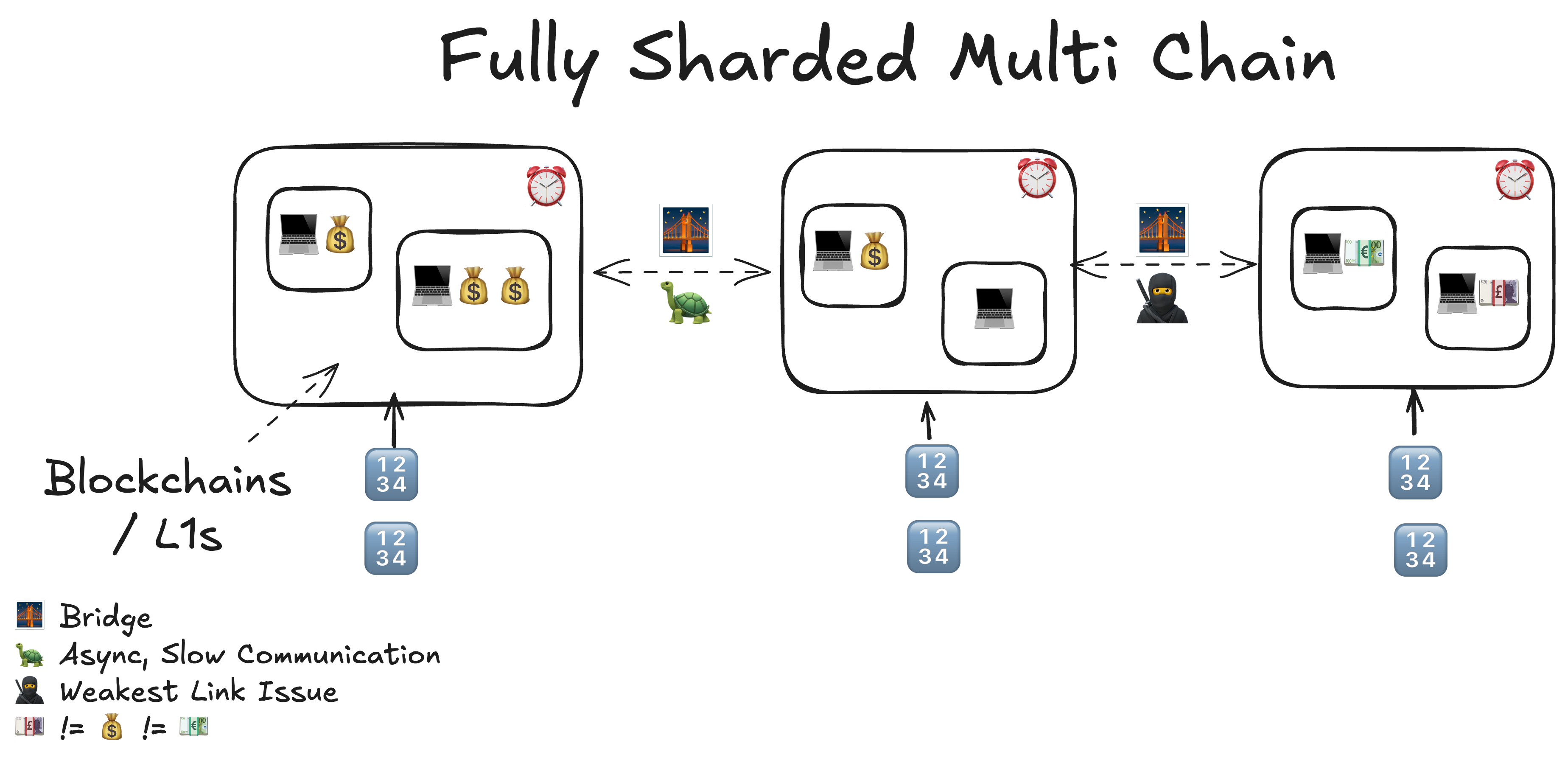
-Sharding Security and Capital / Limited Capital
Note:
- Cosmos' original view
- There's only limited capital in the world, shard execution, and economic security.
- Multi chains, in general real to a multitude of issues:
- 🐢 Slow and asynchronous communication
- 💴 vs 💰 / 🥷: varying degrees of economic security, leading to a the weakest link issue
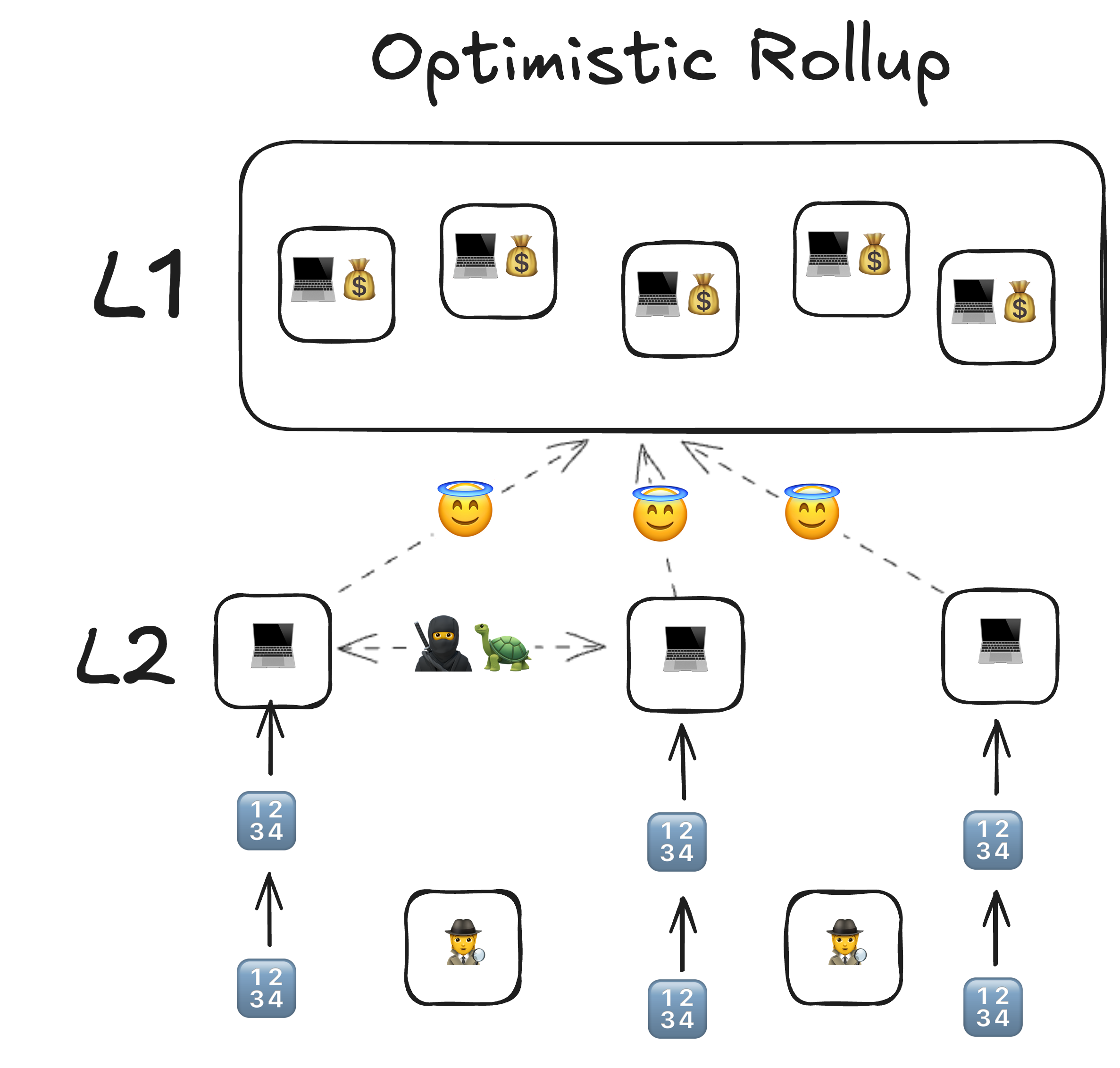
-Slow finality / ⚠️ Need FP / Fragmented+Little overhead on L1 (Execution, DA)
Note:
- little overhead on the base security layer, scales well:
- New rollup, in the absence of fraud, no overhead on L1 in terms of execution, only DA
- Although, in the presence of fraud, the L1 has to re-execute everything. I wonder how much this scales in the presence of frauds, and when compared to the cost of performing fraud.
- slow finality
- In the presence of fraud proofs, it is secure. In the lack of of fraud proofs, it is a non-starter because it fully loses touch with the initial assumption of "the system is secure because of the L1 validators' economic security".
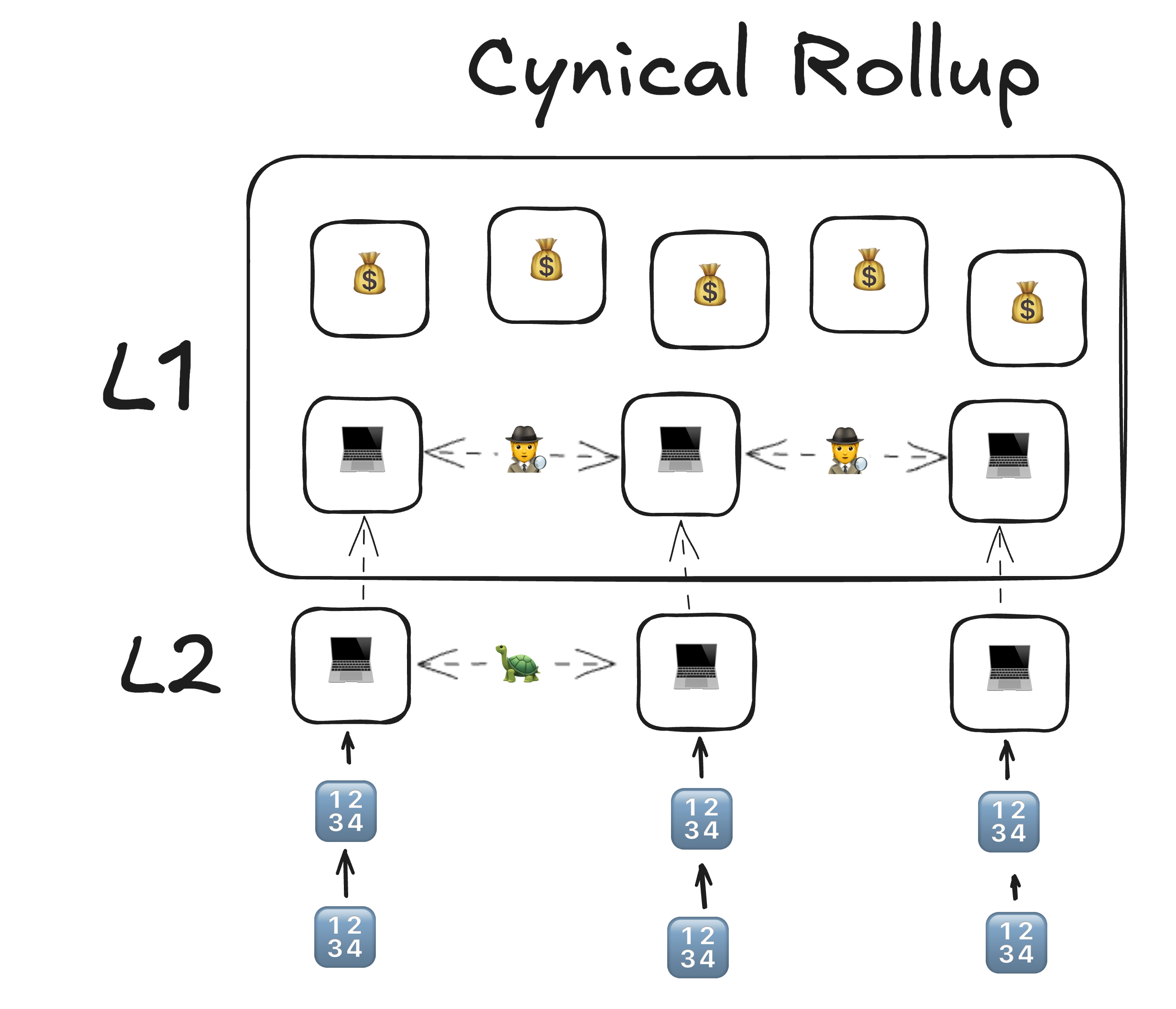
+FP Is proactive and secure / FAST finality / 🥷🔫 HOMOGENOUS security-proactiveness is not free, but still scales well- ELVES / Sharded Execution, Shared Security / "Validator waiting room" analogy
Note:
- Fraud prover is my neighboring validator, and is as secure as I am.
- Fraud prover is proactively asked to check my work.
- In case of escalation, all validators participate. Hydra analogy.
- This leads, through game theoretic and economic rules into a system that is functionally equivalent to Shared Security, but sharded execution.
- ELVES: The cost of attacking any of the L2s in this model, is as high as the cost of attacking the entire L1.
- Optimistic: Go to the room of validators, and if after 2 weeks no one says that something was wrong, you are good.
- Cynical: Go to the room of validators, and ask 5 random validators out of 1000 what they think. Then ask 5 more random ones what they think of the
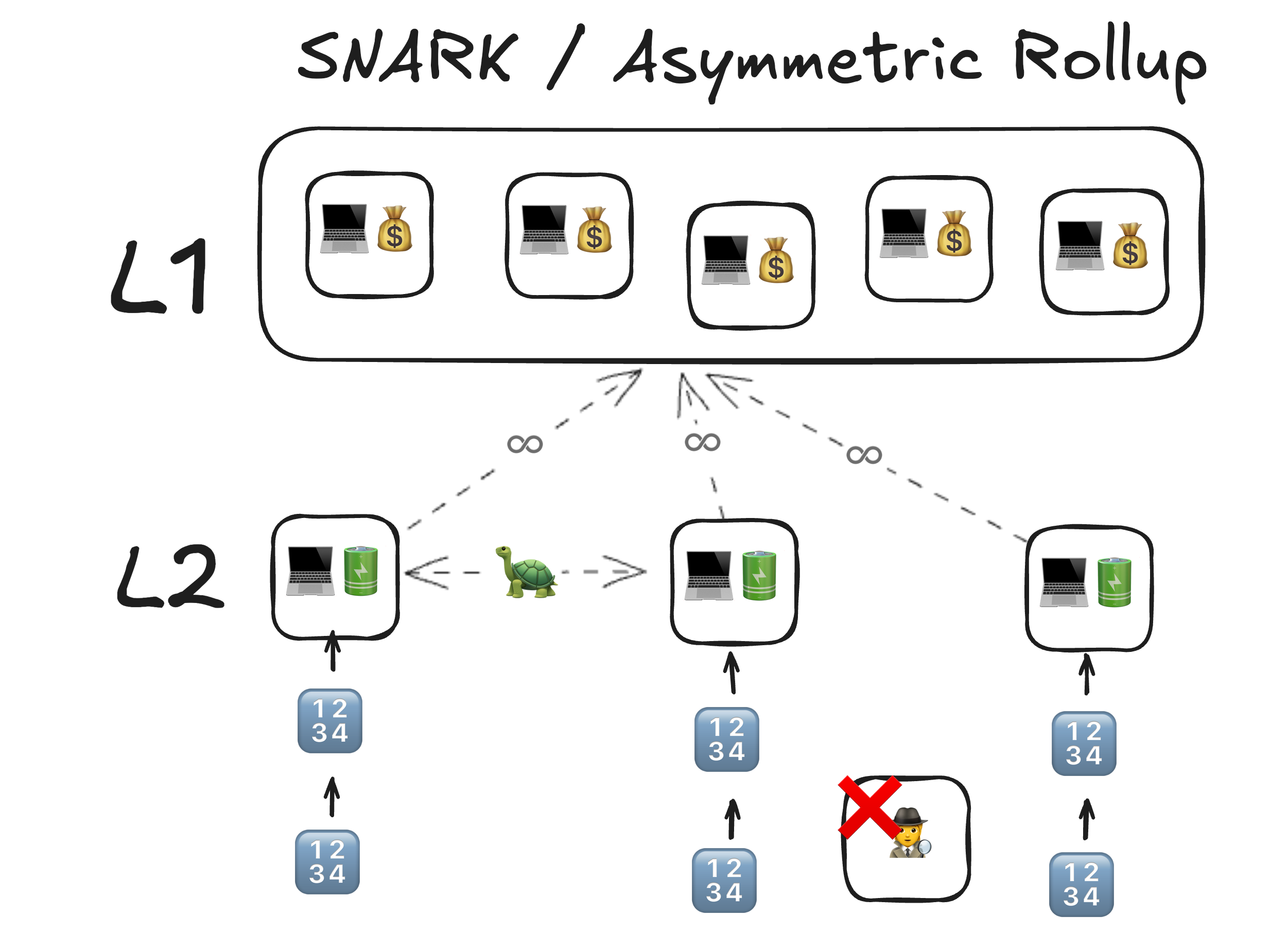
+Secure-Expensive to prove, Generality
Note:
- Coprocessor Market Structure: Cryptoeconomic vs ZK | rob.tech
- 4.1 Heated Pannel: Programmable Crypto (ZK) v.s. Programmable Trust (Restaking) - YouTube
- A technical FAQ on Lasso, Jolt, and recent advancements in SNARK design - a16z crypto
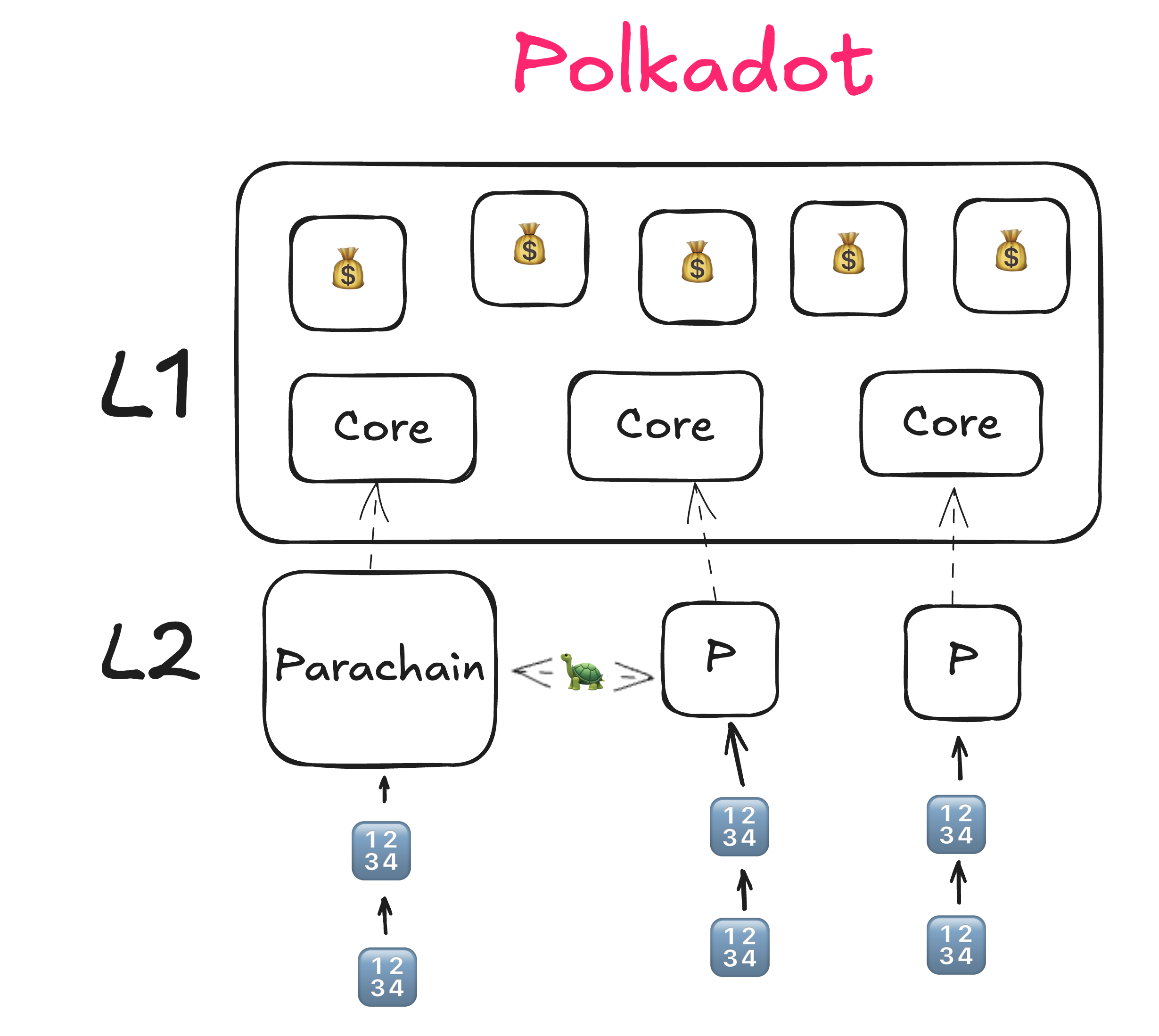
- Cores, Parachains
Note:
- Higher Cost, an inevitability of the proactiveness of the security that Polkadot offers
- Shorter time to finality
- Possibility of implementing SPREE
- No weakest link issue.
Polkadot 2.0
- Make the usage of cores more flexible:
- Agile and On-demand
- Elastic Scaling
- Lower Block Times, 0.5 parachains are coming
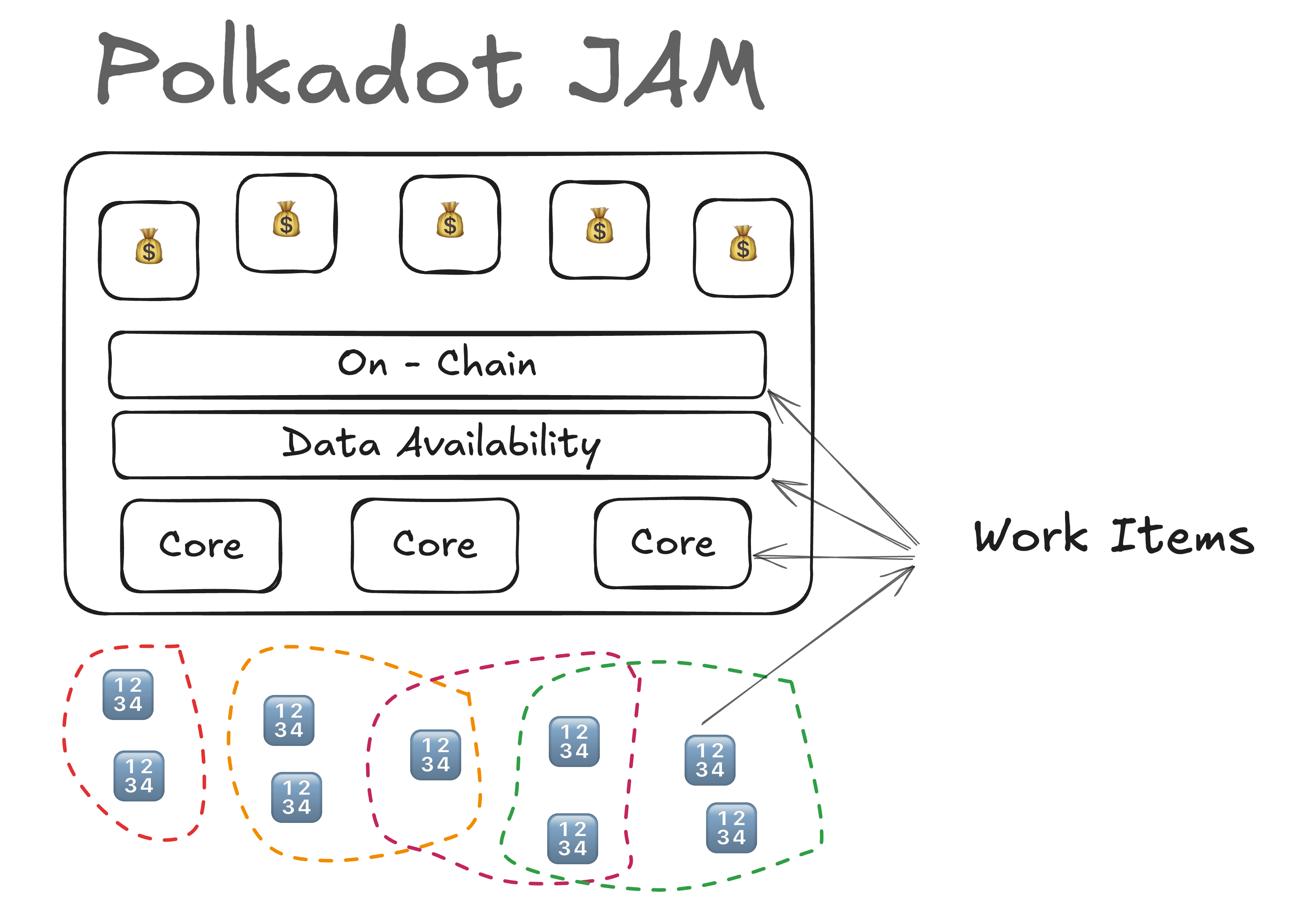
- Gutting and exposing Polkadot's core abilities.
- You can only do this under the shadow of Cynical Rollups' shared security.
- .. and a very powerful VM.
Note:
JAM is a gutting of Polkadot that exposes:
- DA
- Onchain
- In-Core
To the user of each core.
JAM (2)
Why is JAM a big deal, and a step forward?
Persistent Fragmentation ❌
Note:
All models so far suffer from a property that we can call persistent fragmentation. The state associated with each application must live within the boundaries of its own walled garden.
Through access to DA, and a fully unspecified scheduling, application that run on JAM (Services) need not suffer from persistent fragmentation, should they wish to.
This is a big deal, and a step forward in the space of sharded blockchain.
Summary
| Economically Secure? 💻💰 | Homogenous Economic Security 🥷 | Fragmented? 🐢 |
|
|---|---|---|---|
| Hyper Optimized | ✅ 🙈 | N/A | ✅ |
| Sharded MC | ✅ 📉 | ❌ | ❌ |
| Optimistic RU W FP | ✅ | ❌ ~ ✅ | ❌ |
| Optimistic RU WO FP | ❌ | ❌ | ❌ |
| SNARK Rollups | ✅ | ❌ ~ ✅ | ❌ |
| Cynical Rollups | ✅ | ✅ | ❌ |
| JAM | ✅ | ✅ | ✅* |
Close
Question: Which application is best suited to which computer?
How can we build systems that are faster but are not a time-bomb waiting for the next black swan event?
- Strong Opinions? Later ;)
- Talk + Recording
Note:
- I tried to keep this talk intentionally un-opinionated, but I do have stronger opinions ;)
- Come talk to me afterwards, or perhaps the panel later today.
- TUM Dry Run
Appendix
- I merged PoW and PoS fully, and I argue PoW is a specialized case of PoS in which stake is paid in hardware. Come change my mind.
-
Comments
- Made with Obsidian-Digital-Garden
- © Kian Paimani . Content on this site is licensed under a Creative Commons Attribution 4.0 License.